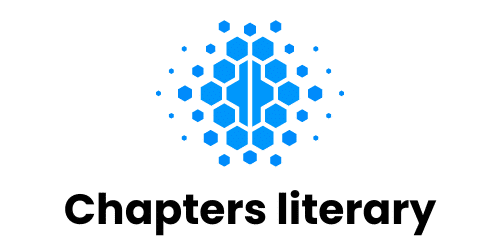How to safely manage a pet bird’s beak length without causing stress?

Birds are among the most wonderful of pets, giving their owners joy with their charming antics, colorful plumage, and the melody of their songs. Among the various avian species, parrots are particularly popular. However, bird ownership comes with a slew of responsibilities, paramount among these is the regular maintenance of your pet’s beak and claws.
Avian beak and claw care is crucial for the health and wellbeing of your feathered friend. An overgrown beak or long nails can impede a bird’s ability to eat, preen, and perch, leading to distress and potential health issues. Therefore, learning the correct and stress-free techniques for trimming your bird’s beak and claws is essential.
Have you seen this : How to address nocturnal behavior in cats to prevent sleep disruption for owners?
Understanding Your Bird’s Beak
The beak is an indispensable part of a bird’s anatomy. It serves various purposes – from eating and preening to climbing and defending. In captivity, however, birds may not wear down their beaks adequately due to a lack of natural foraging activities.
A bird’s beak consists of an upper and a lower part made of keratin, the same material found in our fingernails. Normally, these parts wear down naturally over time due to the bird’s everyday activities. However, if you notice your pet’s beak is overgrown, it can be a sign that they are not getting enough opportunities for natural beak wear.
Also to see : What are the safest chew toys for dogs with aggressive chewing habits?
Overgrown beaks can lead to difficulties in eating, problems with speech in parrots, and eventually, overall health issues. Trimming an overgrown beak is necessary but it can be a stressful experience for your bird if not done properly. Therefore, it’s crucial to understand how to safely manage your pet bird’s beak length without causing undue stress.
Trimming Your Bird’s Beak the Right Way
When it comes to trimming your pet bird’s beak, patience, and care are key. While some bird owners may feel confident in doing this on their own, it is often best to consult an avian vet, particularly for birds with very long or misshapen beaks.
The use of a towel is a common technique to calm the bird during the trimming process. Gently wrapping the bird in a towel, with only the head exposed, can help to reduce stress and keep the bird still. However, you must ensure not to wrap the bird too tightly to prevent any discomfort or injury.
Special bird beak trimmers or a gentle, fine-grit nail file can be used for trimming, depending on the species of the bird and the length of the overgrown beak.
Providing Proper Beak Care
Beyond trimming, providing proper beak care involves creating an environment that encourages natural beak wear. Supplying your bird with a variety of toys and foods that require manipulation can help to naturally wear down their beak.
Additionally, you can provide perches of varying textures and diameters to stimulate beak and claw wear. Cuttlebone and mineral blocks are also beneficial as they provide necessary nutrients while helping to maintain beak health.
Managing Your Bird’s Claws
Just like the beak, your bird’s claws can become overgrown if not properly managed. Overgrown nails can not only cause discomfort but also interfere with your pet’s ability to grasp and climb, leading to accidents within the cage.
Trimming your bird’s claws can be performed using specially designed bird nail clippers or a nail file. As with beak trimming, wrapping your bird in a towel can help to keep them calm and still. It’s important to avoid cutting into the quick – the part of the claw that contains blood vessels and nerves – as it can cause pain and bleeding.
Ensuring a Stress-Free Experience
Finally, maintaining a calm environment during the trimming process is instrumental in ensuring a stress-free experience for your bird. Keep your voice low and soothing, and reward your pet with their favorite treat after the procedure. With time, patience, and practice, managing your pet bird’s beak and claws will become a routine aspect of their care.
In the end, remember to always observe your bird’s behavior and physical condition. Any drastic changes may signal health issues that need professional attention. While beak and claw care are essential, they are just part of the comprehensive care necessary for a healthy, happy pet bird.
Detecting Beak and Liver Diseases in Pet Birds
An essential aspect of pet bird care is detecting and treating beak and liver diseases. Birds are prone to fatty liver disease and other health issues that can manifest as changes in their beak, such as discoloration or malformation. Therefore, regular observation and physical examination of your bird’s beak can play a vital role in their overall health.
Fatty liver disease is prevalent in pet birds and may lead to an overgrown beak. This disease is typically a result of high-fat diets and lack of exercise, which are common in captive birds. If left untreated, it can lead to serious complications and even death. Symptoms of fatty liver disease may include a bent or curved upper beak and lower beak misalignment.
It’s also important to remember that a bird’s beak color might change due to liver disease. A healthy bird usually has a shiny, smooth beak, but a diseased liver may cause the beak to appear dull or discolored.
If you observe any changes in your bird’s beak or if you are unable to manage your bird’s beak length, it’s crucial to consult an avian veterinarian. A professional can perform a thorough physical examination, initiate beak trimming if necessary, and provide guidance on dietary and lifestyle changes to prevent bird diseases.
Conclusion: Maintaining a Healthy Bird
Maintaining a healthy bird is a rewarding but demanding task. It requires a good understanding of your bird’s needs and behaviors, including the management of their beak and claws.
Regular and careful observation is key. Changes in the bird’s beak, such as overgrowth, discoloration, or malformation, can indicate underlying health issues like fatty liver disease. Similarly, long or misshapen claws can interfere with the bird’s mobility and comfort.
Proper diet and environment are vital for your bird’s wellbeing. Foods that require manipulation, variety of toys, perches of varying textures, cuttlebones, and mineral blocks will help stimulate natural wear and tear while providing necessary nutrients.
Beak and claw trimming can be a stressful experience for both the bird and the owner. Ensuring a calm environment, gentle handling, and patient approach will help make the process fear-free and less stressful.
Finally, remember that while you can manage many aspects of your pet bird’s care at home, some situations require professional help. Regular check-ups with an avian veterinarian ensure that your bird remains healthy and any potential issues are addressed promptly.
Caring for a pet bird is a responsibility that brings immense joy and satisfaction. By understanding and addressing your bird’s needs, you can ensure a long, happy, and healthy life for your feathered friend.
